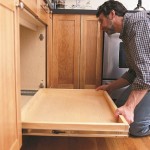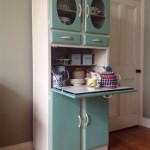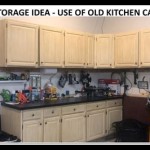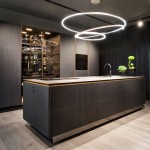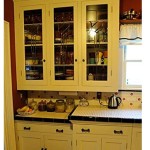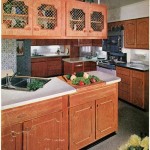What Is The Best Paint to Repaint Kitchen Cupboards?
Repainting kitchen cupboards is a cost-effective way to refresh a kitchen's aesthetic without undergoing a complete renovation. The choice of paint, however, significantly impacts the project's success, longevity, and overall appearance. Selecting the "best" paint requires careful consideration of various factors, including the existing cupboard material, desired finish, application method, and the level of durability required to withstand daily use and potential spills.
The optimal paint for kitchen cupboards should offer a balance of aesthetic appeal, ease of application, and robust performance. It must adhere well to the existing surface, provide adequate coverage, and withstand frequent cleaning. Furthermore, the paint should be resistant to chipping, scratching, and moisture damage, common issues in a kitchen environment. This article will delve into the various types of paint suitable for kitchen cupboards, highlighting their advantages and disadvantages to provide a comprehensive guide for making an informed decision.
Understanding the Material of Your Kitchen Cupboards
Before selecting a paint type, identifying the material of the kitchen cupboards is crucial. Common materials include solid wood (such as oak, maple, or pine), wood veneer, laminate, and medium-density fiberboard (MDF). Each material reacts differently to paint, and the appropriate surface preparation and paint choice are essential for achieving a durable and aesthetically pleasing finish.
Solid wood cupboards often have a grain pattern that can be enhanced or obscured depending on the desired aesthetic. Wood veneer, being a thin layer of wood adhered to a substrate, requires a gentle approach to avoid damage during preparation and painting. Laminate cupboards present a challenge due to their non-porous surface, necessitating specialized primers for proper adhesion. MDF, while smooth and stable, can absorb paint readily, potentially requiring multiple coats for adequate coverage. Understanding these material-specific properties is the foundational step in selecting the best paint.
Types of Paint Suitable for Kitchen Cupboards
Several types of paint are commonly used for repainting kitchen cupboards, each with its own strengths and weaknesses. The most prevalent options include alkyd (oil-based) paints, latex (water-based) paints, and acrylic paints. Within these categories, specific formulations, such as enamel paints and cabinet-specific paints, are often favored for their enhanced durability and finish quality.
Alkyd paints are known for their hard, durable finish and excellent leveling properties, resulting in a smooth, professional-looking surface. They offer superior resistance to chips, scratches, and moisture, making them a good choice for high-use kitchen environments. However, alkyd paints have a strong odor, require mineral spirits for cleanup, and tend to yellow over time, particularly in areas with limited sunlight exposure. They also have a longer drying time compared to water-based options.
Latex paints, on the other hand, are water-based, low in volatile organic compounds (VOCs), and easy to clean up with soap and water. They dry quickly and offer good color retention, minimizing the risk of yellowing. However, traditional latex paints may not be as durable as alkyd paints and can be more prone to chipping and scratching. Modern latex formulations, particularly those incorporating acrylic resins, have significantly improved in durability and are now viable options for kitchen cupboards.
Acrylic paints offer a compromise between alkyd and latex. They provide good adhesion, durability, and color retention, and are generally easier to work with than alkyd paints. Acrylic paints are water-based, minimizing odor and simplifying cleanup. They also offer good flexibility, which helps prevent cracking and peeling over time. Acrylic enamels, specifically formulated for cabinets and trim, provide a hard, durable finish that rivals alkyd paints in terms of performance.
Cabinet-specific paints are often formulated with enhanced leveling properties and superior adhesion to glossy surfaces. These paints are typically acrylic or acrylic-urethane blends and are designed to withstand the rigors of a kitchen environment. They offer excellent resistance to grease, stains, and moisture, and are available in a variety of sheens to suit different aesthetic preferences.
Key Considerations When Choosing a Paint
Beyond the basic paint type, several other factors should be considered when selecting the optimal paint for repainting kitchen cupboards. These include the desired sheen, the level of surface preparation required, the application method, and the overall cost of the project.
Sheen refers to the level of gloss in the paint finish. Matte finishes are non-reflective and offer a soft, understated look, but they can be more difficult to clean. Semi-gloss and gloss finishes are more durable and easier to clean, making them ideal for high-traffic areas like kitchens. However, high-gloss finishes can accentuate imperfections in the surface, requiring meticulous preparation. Satin finishes offer a balance between durability and aesthetic appeal, providing a subtle sheen that is both easy to clean and visually pleasing. The choice of sheen is largely a matter of personal preference and the desired aesthetic for the kitchen.
Surface preparation is paramount for achieving a successful paint job. Proper preparation involves cleaning the cupboards thoroughly to remove grease, dirt, and grime. Sanding the surface to create a slightly rough texture promotes better adhesion. Filling any holes or imperfections with wood filler ensures a smooth, even finish. Priming the cupboards with a compatible primer is essential for blocking stains, sealing the surface, and providing a uniform base for the paint to adhere to. The level of surface preparation required will vary depending on the existing condition of the cupboards and the type of paint being used. Laminate and glossy surfaces often require a bonding primer specifically designed to adhere to non-porous materials.
The application method can also influence the choice of paint. Brushing, rolling, and spraying are the most common application techniques. Brushing is suitable for small projects and intricate details, but it can leave brushstrokes if not done carefully. Rolling provides a faster and more efficient way to cover large surfaces, but it can also leave a slightly textured finish. Spraying, using an airless sprayer or HVLP (high volume low pressure) sprayer, provides the smoothest, most professional-looking finish, but it requires more skill and equipment. The type of paint being used should be compatible with the chosen application method. Some paints may require thinning for optimal spraying performance.
The overall cost of the project should also be considered. Alkyd paints tend to be more expensive than latex paints, and cabinet-specific paints may command a premium price. The cost of primer, brushes, rollers, sandpaper, and other supplies should also be factored in. While it may be tempting to opt for the cheapest paint option, investing in a high-quality paint and proper preparation materials will ultimately result in a more durable and aesthetically pleasing finish, saving time and money in the long run.
Ultimately, selecting the best paint to repaint kitchen cupboards is a matter of balancing performance, aesthetics, and budget. By carefully considering the material of the cupboards, the desired finish, the application method, and the level of durability required, a well-informed decision can be made to achieve a beautiful and long-lasting kitchen transformation.

How To Paint Kitchen Cabinets Like The Pros

How To Paint Kitchen Cabinets Best Color Ideas Cost

How To Paint Kitchen Cabinets A Step By Guide Confessions Of Serial Do It Yourselfer

Avoid These Mistakes How To Paint Cabinets That Are Already Painted Grace In My Space

How To Paint Kitchen Cabinets Like The Pros

How To Paint Kitchen Cabinets

How To Paint Kitchen Cabinets Like The Pros

Kitchen Cupboard Paint How To Your Cupboards

The Best Kitchen Cabinet Paint Brand Honest Review

Step By How To Paint Your Kitchen Cabinets

